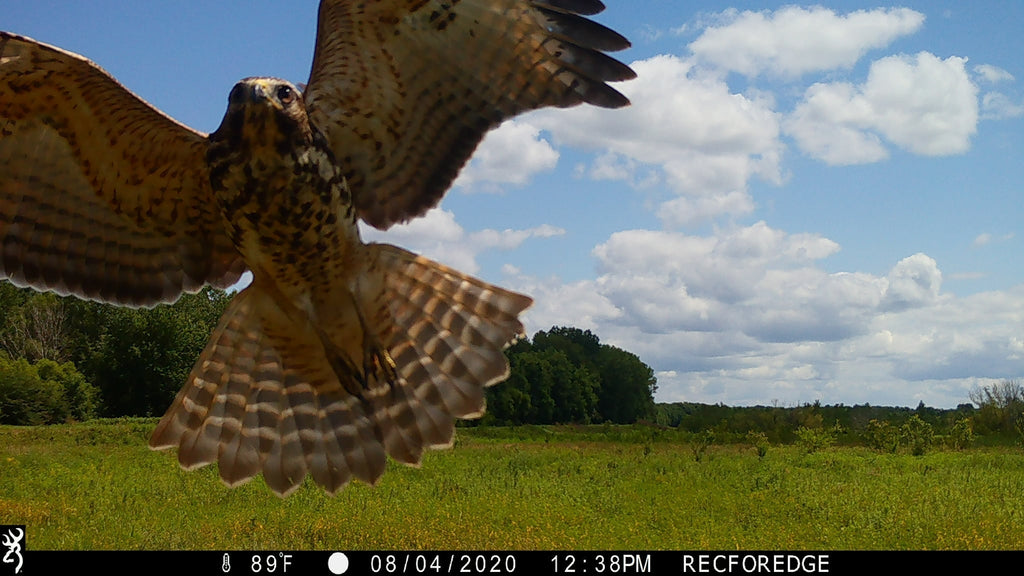A Beginner’s Guide to Backyard Birdwatching with Browning Trail Cameras

Birdwatching is a peaceful and engaging way to connect with nature. Watching colorful birds flit through your backyard can bring a sense of joy and curiosity. Whether you're observing familiar species or spotting seasonal visitors, using a trail camera can elevate your birdwatching experience. This guide will walk you through how to set up your Browning Trail Camera to capture stunning footage of your feathered guests, offering tips on camera placement, bird behavior, and identification.

Why Use a Trail Camera for Birdwatching?
Traditional birdwatching often involves binoculars and field guides, but trail cameras offer something extra—an opportunity to catch the moments you might miss. From early morning arrivals to secretive nocturnal visitors, a trail camera keeps watch even when you can’t. It also provides a chance to observe behaviors up close without disturbing the birds, making it a perfect tool for beginners and seasoned birdwatchers alike.
Getting Started
Setting up your trail camera for birdwatching is straightforward. Here’s how to make sure you’re ready to capture the best moments.
Choosing the Best Location
Birds gravitate toward areas that offer food, water, and shelter. Position your trail camera near feeders, birdbaths, or natural perching spots like bushes and low-hanging branches. For an extra draw, set up multiple feeders with a mix of seeds, suet, and nectar to attract a variety of species.
Adjusting Camera Height and Angle
The height of your camera matters. Place it at 3–5 feet off the ground when focusing on bird feeders or closer to eye level for perched birds in shrubs or trees. Tilting the camera slightly downward can help you capture clear, framed shots as the birds land or feed.

Keep an Eye on Seasonal Changes
Bird activity shifts with the seasons. During winter, feeders may be especially busy as natural food sources dwindle, while spring brings migratory species and the excitement of nest-building and courtship displays. Adjust your camera placement and food selection based on seasonal patterns to make the most of these changes.

Camera Settings for Birdwatching
Browning Trail Cameras come with customizable settings to help you capture stunning bird footage. Here are some ways to optimize your camera for birdwatching:
● Photo vs. Video Mode: Photos are great for quick snapshots, but video mode captures a fuller picture of bird behavior. Try short video clips to observe interactions like feeding, preening, or courtship displays.
● Trigger Speed and Sensitivity: Since birds move quickly, a fast trigger speed is essential. Use high sensitivity for small birds like chickadees or warblers, and medium sensitivity for larger species like woodpeckers or jays.
● Time-Lapse Mode: This feature is useful for tracking bird activity throughout the day. Set intervals to capture how activity changes during different times, such as morning feeding frenzies or evening visits.
Common Backyard Birds You Might Spot
Your trail camera may introduce you to familiar and new feathered friends. Here are some of the most common backyard species:
● Northern Cardinal: Males are bright red, while females have warm brown tones with red highlights. Their distinctive chirps are easy to recognize.
● Blue Jay: With bold blue feathers and a loud personality, Blue Jays are hard to miss. They’re known for their varied calls and occasional mimicry of other birds.
● American Robin: These birds are often seen hopping on lawns in search of worms. Look for their orange-red chests and listen for their cheerful songs.
● Chickadees: Recognized by their black caps and white cheeks, chickadees are small and quick. Their “chick-a-dee-dee” call is unmistakable.
● Downy Woodpecker: Frequently seen on tree trunks, these small woodpeckers have black-and-white patterns, with males sporting a red patch on their heads.
● Ruby-throated Hummingbird: In warmer months, these tiny, fast birds hover near nectar feeders. Males have a striking red throat that flashes in the light.
Attracting Birds to Your Camera
Creating a bird-friendly environment increases your chances of capturing great footage.
● Offer a Variety of Food: Different species prefer different foods. Black oil sunflower seeds attract cardinals and finches, while suet is perfect for woodpeckers. In summer, nectar feeders draw in hummingbirds.
● Provide Water: A birdbath or shallow dish of water attracts thirsty birds. Moving water—like a fountain or dripper, can be especially enticing.
● Create Natural Shelter: Birds feel safer when they have nearby cover. Native shrubs and trees offer both protection and additional food sources.
Capturing and Sharing Your Birdwatching Moments
Browning Trail Cameras make it easy to save and share your birdwatching experiences.
● Keep a Birdwatching Log: Document the birds you capture, noting their behavior and any interesting observations. Over time, this record will reveal patterns and help you recognize recurring visitors.
● Share with Friends and Online Communities: Post your best captures on social media to connect with other birdwatchers. Joining birdwatching groups can expand your knowledge and help you identify unfamiliar species.
● Build a Digital Archive: Organize your favorite photos and videos by season or species. Consider creating a digital photo album or printing your top shots for a keepsake.
Enjoy the Journey
Backyard birdwatching with a trail camera opens up a world of discovery. With a little patience and the right setup, you’ll be able to observe and appreciate the unique beauty of your local bird population. Every capture tells a story, and with Browning Trail Cameras, you’ll have those stories to keep and share for years to come.
